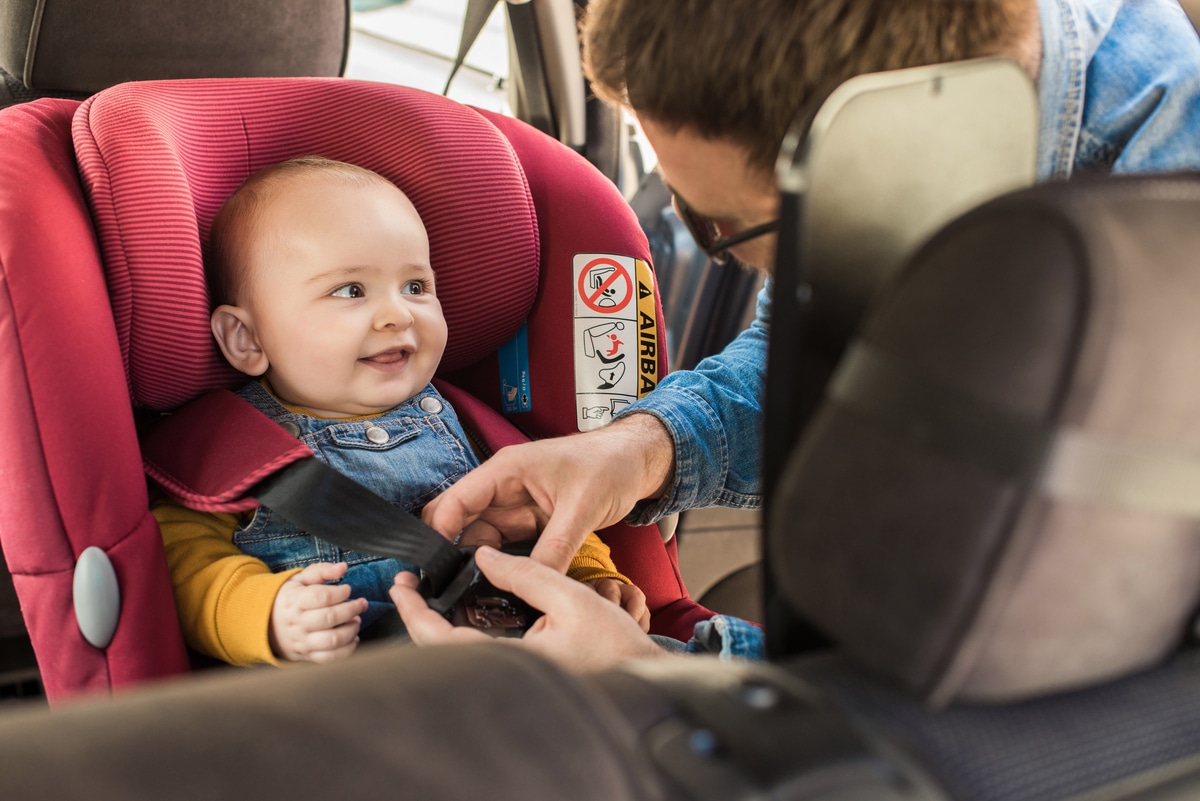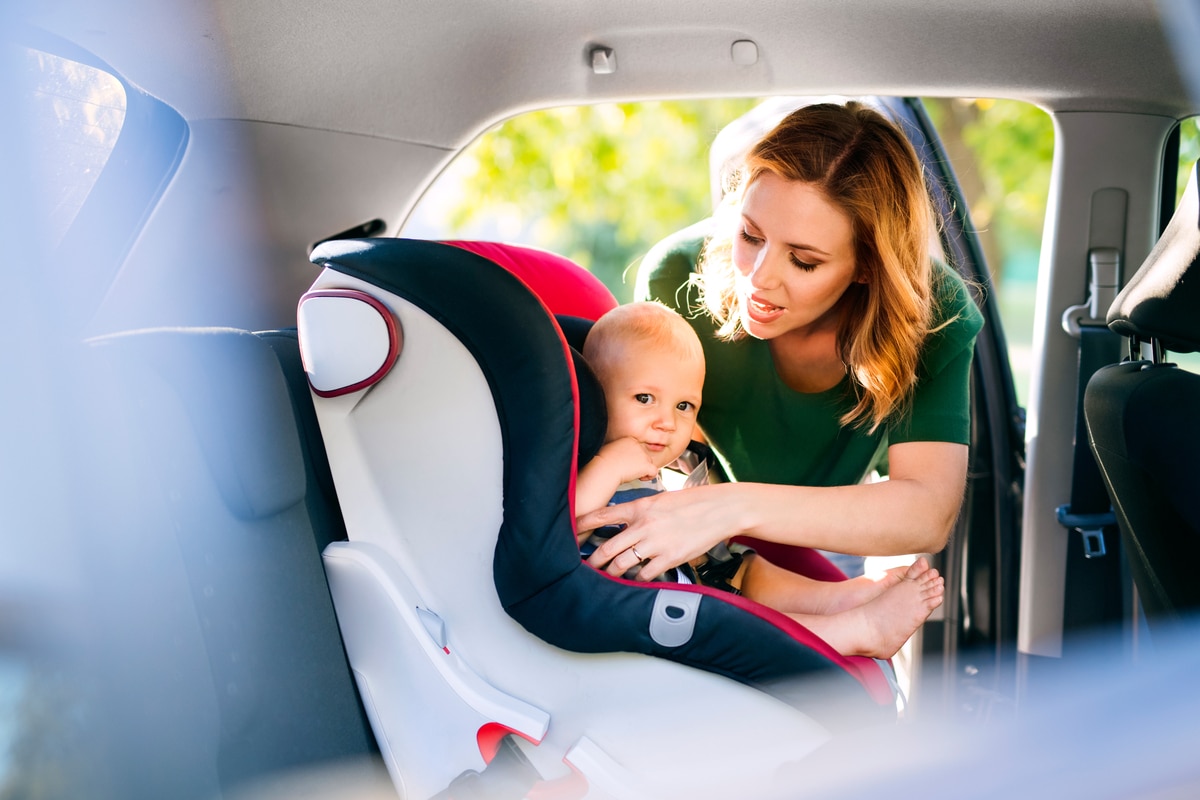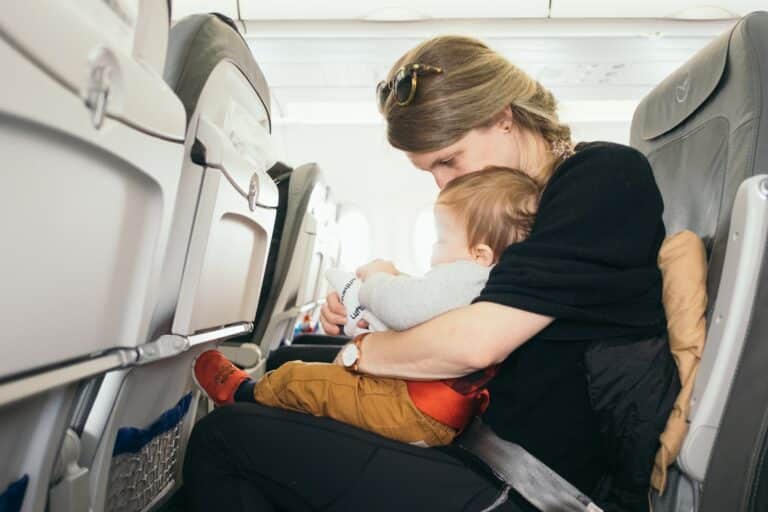Choosing the right car seat for your baby can be a daunting task. With so many different features and brands on the market, how do you know which one is right for your child? This blog post will help you navigate through the process of choosing the best car seat for your baby. We’ll provide tips on what to look for when shopping for a car seat. So whether you’re a first-time parent or you’re just looking to upgrade your current car seat, read on for advice on how to choose the perfect one for your baby.
In This Article
Choose Right Car Seat for your Baby:
When buying a car seat for your baby, it is important to consider both the safety and comfort of your child. There are a variety of car seats on the market, so it is important to do your research to find the best option for your family.
Safety is always the most important consideration when choosing a car seat. Make sure to find a seat that is certified by the National Highway Traffic Safety Administration (NHTSA). The NHTSA has a 5-Star Safety Rating System to help you compare car seats. Look for a car seat with a high rating, as this indicates that it has been thoroughly tested and proven to be safe.
It’s also important to choose a car seat that’s appropriate for your baby’s age, weight, and height. For example, infants and small babies should be in rear-facing seats, while bigger kids can ride in front-facing seats.
In addition to safety, comfort is also an important factor to consider when choosing a car seat. Your baby will be spending a lot of time in their seat, so it is important to find one that they will be comfortable in. Look for a seat with adjustable straps and cushions to ensure a good fit. Also, make sure the seat is easy to clean, as you will likely be doing a lot of laundry with a new baby in the house!
Once you have considered safety and comfort, you can then start to narrow down your choices based on other features. Some seats come with additional features such as cup holders and sunshades. Others have different recline positions to make it easier for your child to sleep. Consider what features would be most important to you and your family when making your final decision.
What are Different types of baby car seats:
1. Rear-facing car seat:
Rear-facing car seat are the safest type of seat for infants and toddlers. They should be used in the back seat of the car, in a rear-facing position, until your child reaches the maximum weight or height limit for that particular seat.
2. Forward-facing car seat:
Forward-facing car seat are for older toddlers and preschoolers who have outgrown their rear-facing seats. These car seat should be used in the back seat of your car, in a forward-facing position, with a harness.
3. Booster seat:
Booster seat are for older kids who have outgrown their forward-facing seats. These seats should be used in the back seat of your car, in a booster seat position, with a lap and shoulder belt.

Tip to choose the right Baby Car Seat:
- The type of vehicle you have: Some car seats fit better in certain types of vehicles than others. You’ll want to make sure the car seat you choose is compatible with your vehicle.
- Your budget: There is a wide range of prices for a car seat. You’ll want to find one that fits within your budget.
- The features you want: Some car seats come with a lot of bells and whistles, while others are more basic. Decide what features are most important to you and look for a seat that has them.
- Size, Weight: Your child’s car seats should be appropriate for their weight, height, and age.
- Expiration Date: All car seats have an expiration date. Be sure to check the seat for its expiration date and never use a seat after its expiration date {1}.
- Make sure the car seat is installed correctly and that your child is properly secured in it.
Things to Keep in Mind When Carrying Baby in a Car Seat:
Most car seats are rear-facing only or convertible car seat (can be used rear-facing or forward-facing). Keep your child rear-facing as long as possible. It’s the safest way to ride.
When your child outgrows their rear-facing car seat, they are ready to travel in a forward-facing car seat with a harness.
Once your child outgrows their forward-facing car seat with a harness, they can use a belt-positioning booster seat until the lap and shoulder seat belt fits properly.
All children ages 12 and under should ride in the back seat of your car.
All use 5 point safety harness car seat for your babies.
Never leave the baby in car seat alone.

Benefits of Baby Car Seats:
- A car seat protect infants and toddlers from serious injury or death in case of an accident.
- They help to keep kids properly positioned and secured in the vehicle, which can minimize injuries during a collision.
- If your car seat is the wrong size for your child, he or she could be at risk for serious injury or death in a crash. So, if you think to buy a convertible car seat then make sure about their weight and size, as well.
- Car seats also provide a comfortable place for babies to sit while riding in the car.
- They help to keep kids restrained, which can be important during sudden stops or collisions.
- Car seats can be used for naps and can help to soothe fussy babies on long car rides.
- Car seats also help to keep children from moving around too much inside the car, which can be distracting for the driver.
Which seat is best for the baby in the car?
Parents should put their baby in the backseat of your car in a rear-facing car seat.
The National Highway Traffic Safety Administration (NHTSA) recommends that all infants and children be restrained in a rear-facing car seat until they reach the maximum height or weight for their car seat, as this provides the best protection in case of a crash. The American Academy of Pediatrics (AAP) also recommends that parents keep their children in a rear-facing car seat until they are at least 2 years old and any kid should travel in a car in a car seat until they are 12 years old {2}.
At what age do you switch from an infant car seat?
Most parents switch their infants from an infant car seat to a convertible seat around 9-12 months old. However, there are a few factors that can influence when the switch is made, such as the size and weight of your child and whether or not they have outgrown the infant car seat. If you have any questions or concerns about when to make the switch, be sure to talk to your child’s pediatrician for guidance. Thanks for the question!
How do you know if the baby fits in a car seat?
There are a few things to keep in mind when deciding if the baby fits in a car seat.
- First, you’ll want to make sure that the car seat is the right size for the baby.
- Second, you’ll want to make sure that the baby can sit safely and securely in the car seat.
- Finally, you’ll want to make sure that the baby is comfortable in the car seat.
The best way to know if your baby will fit in your car seat is to bring them with you when you go car shopping. That way, you can try out different car seats in the backseat of different vehicles to see which one works best for your child’s size. Another option is to ask friends or family who have children about what type of car seat they use for their child and if it fits well in their vehicle. Lastly, you can always consult with a pediatrician or other medical professional to get their expert opinion on the matter.
How do I pick a safe car seat?
When it comes to choosing a car seat, safety is always the number one priority for parents. However, with so many different options on the market, it can be tricky to know which one is right for your child. Here are a few things to keep in mind when choosing a car seat:-
- First and foremost, you need to make sure that the car seat is federally approved. This means that it has been tested and meets all of the safety standards set by the government.
- Next, you’ll want to consider the size of your child and choose a seat that will be comfortable for them. If they’re too small for a standard car seat, there are special infant seats available.
- Third, research different car seat models and read reviews from other parents. Get an idea of what features are important to you and what might work best for your vehicle.
- After that consult with your pediatrician. They will be able to offer guidance based on your child’s specific needs and health condition.
- And finally, make sure to properly install the car seat according to the manufacturer’s instructions. Always use the safety straps and harnesses, and never leave your child unattended.
The Conclusion:
Picking the right car seat for your baby can be a daunting task, but it’s important to keep safety as your top priority. Be sure to consult with your child’s pediatrician and do your research before making a purchase. And once you have the car seat, make sure to properly install it and use it every time you hit the road.
Hope our blog on car seats would have helped you to figure out which car seat will be suitable for your baby. If so share it with your friends and family who may find it useful too just as you did. Thanks for Reading!!!
Reference:
{1} Car Seat Guidelines – The American Academy of Pediatrics (2018)
{2} Rear Facing Car Seats – The National Highway Traffic Safety Administration











